The garden was blessed with more than an inch of rain near the far western edge of this week’s tropical storm. Thunderstorms in the week earlier were helpful, but cracks in exposed ground remained that were finally filled by the steady rainfall. Gardens much closer to coastal areas might have had too much of this good thing, but here this was just about perfect to make up for a hot and dry July.
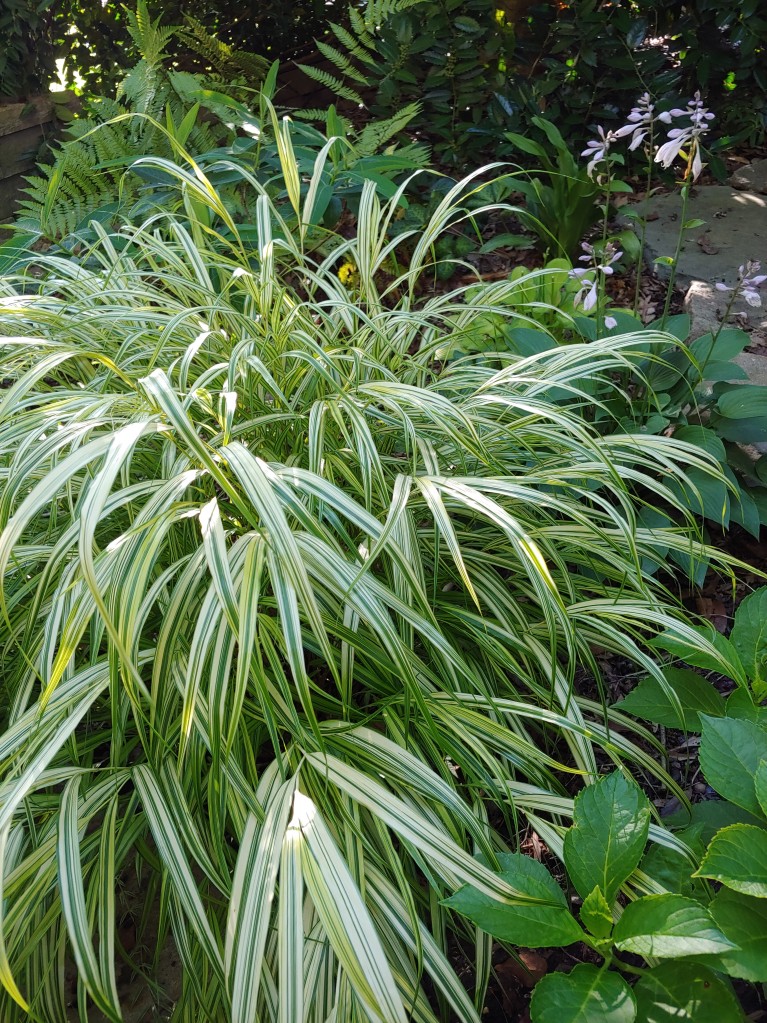
I do not need reminding that dry summers are a good reason to plant a garden that will become shady, and of course the first trees to shade this garden were planted thirty one years ago. Now, parts of the side yard are very dry shade with exposed roots of native swamp maples and blackgum, though the garden has not noticeably suffered this summer besides a bit of sun scalding when tender growth of toad lilies (Tricyrtis) was exposed after pruning a neighboring, unruly yellow flowered baptisia.

While flowers provide the most obvious color, shade and personal preference demand variegated and brightly colored foliage. Several variegated rhododendron (‘Silver Edge’, above) are fitful bloomers, though they grow vigorously, and I am hardly disappointed by their sparse flowering.
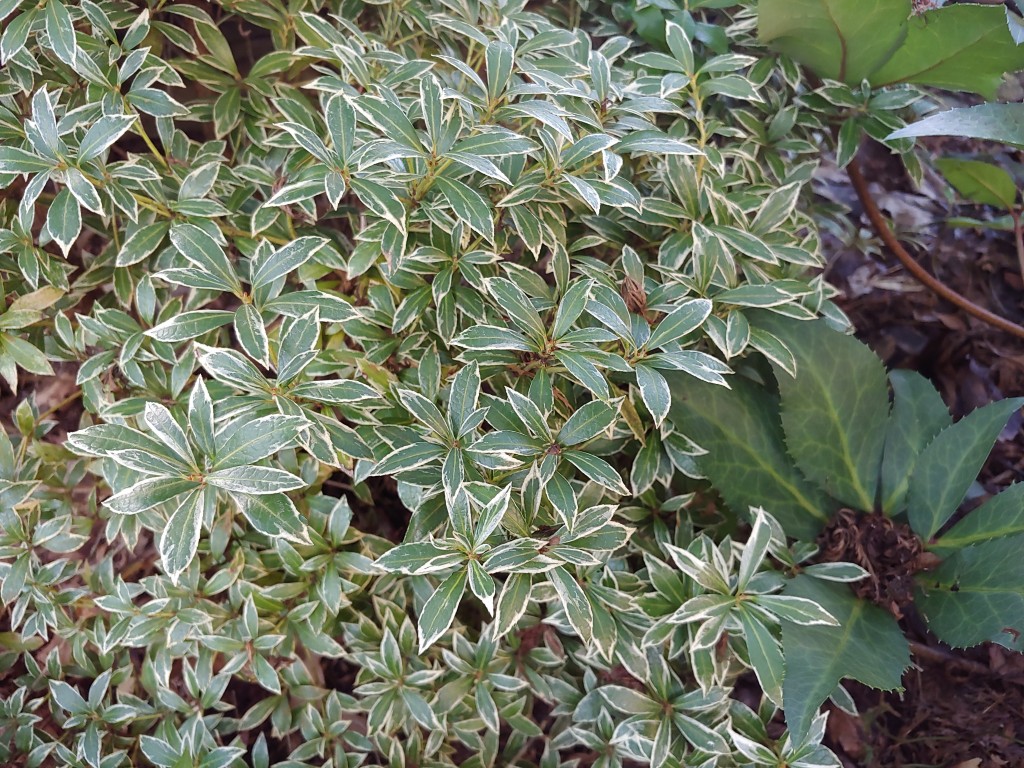
‘Little Heath’ is a compact growing pieris (Pieris japonica ‘Little Heath’, above) with small leaves and compact stature that thrives in this garden, where less tolerant pieris varieties have failed in soils that are generally poorly drained. One in the shade of a wide spreading Red Horse chestnut grows with exceptional vigor, but flowers poorly after years when it bloomed dependably with more sunlight.

A seedling ‘Bonfire’ euphorbia (Euphorbia polychroma ‘Bonfire’) grows through branches of ‘Carol Mackie’ daphne (Daphne x burkwoodi ‘Carol Mackie’). ‘Bonfire’ is short lived in this garden, disappearing annually, but leaving behind seed for next year
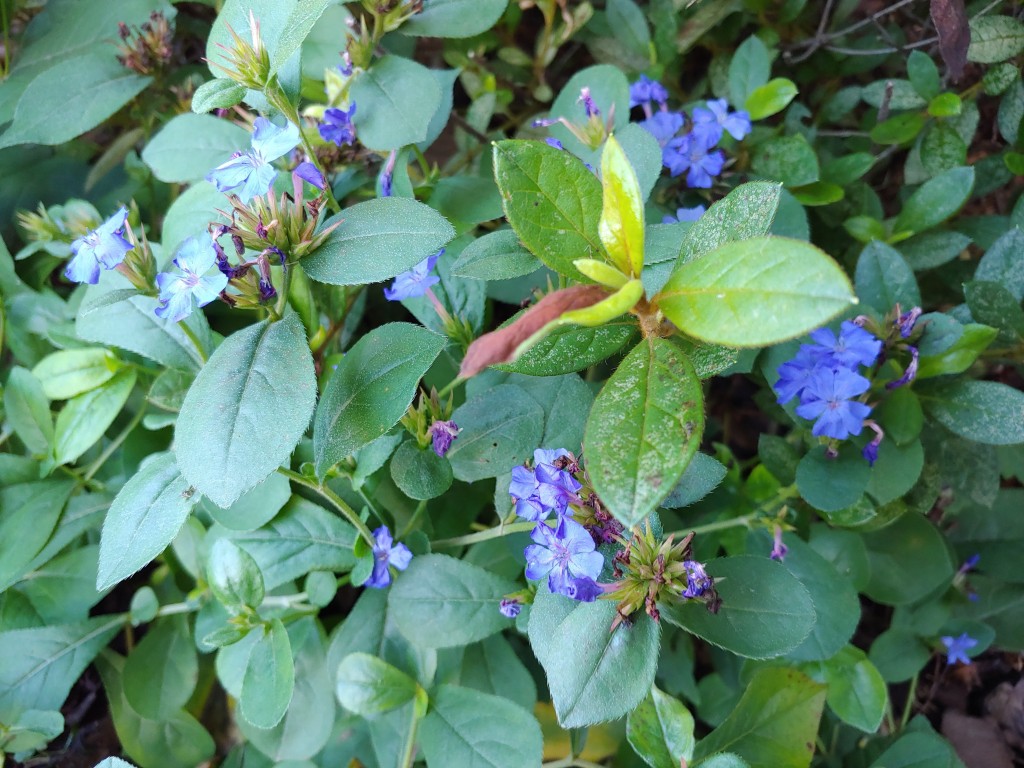
The low growing Hardy plumbago (Ceratostigma plumbaginoides, above) flowers mid to late summer with little care.
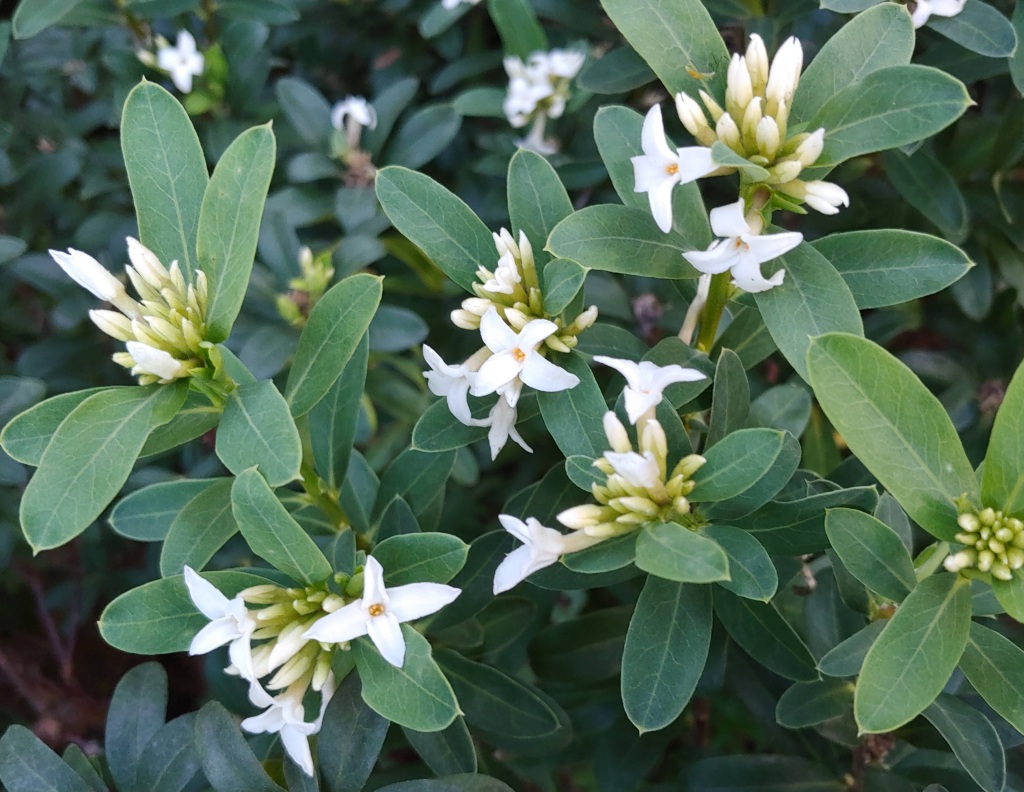
‘Jim’s Pride’ (Daphne x transatlantic ‘Jim’s Pride’, above) is one of several daphnes that flower from March until November. Daphnes are a finicky bunch, but worth the chance if a well drained spot with part sun is available.

‘Picturata’ Japanese aucuba brightens a shady spot, though branches often mutate to the more common ‘Gold Dust’ (below with ‘Francee’ hosta).
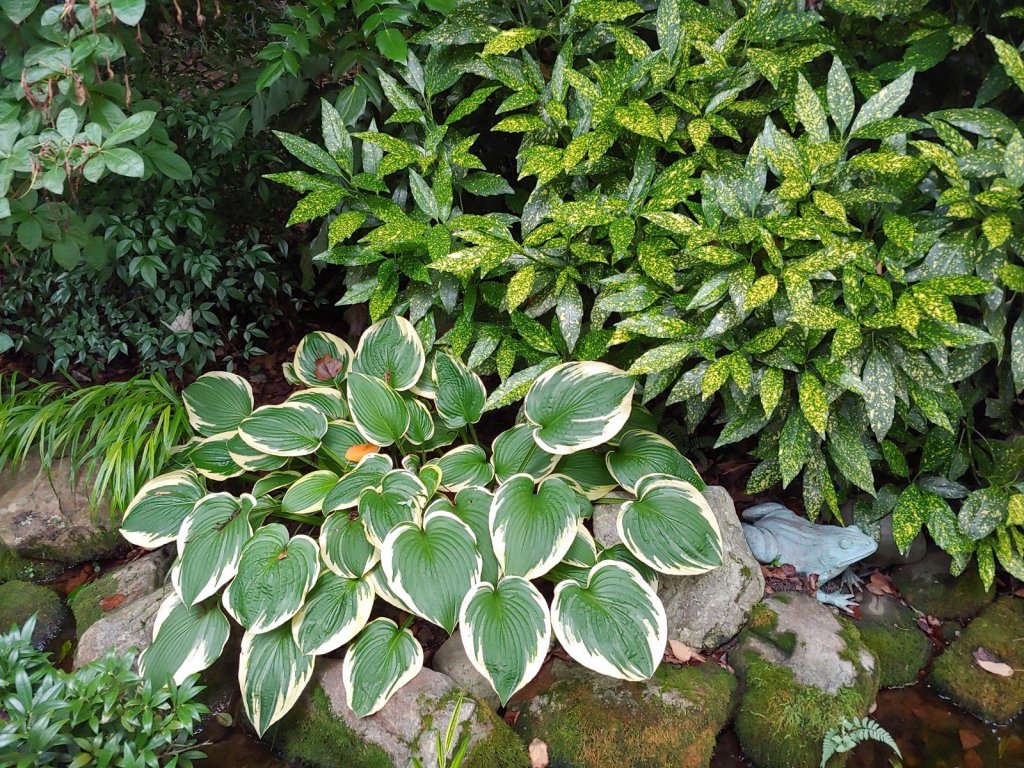
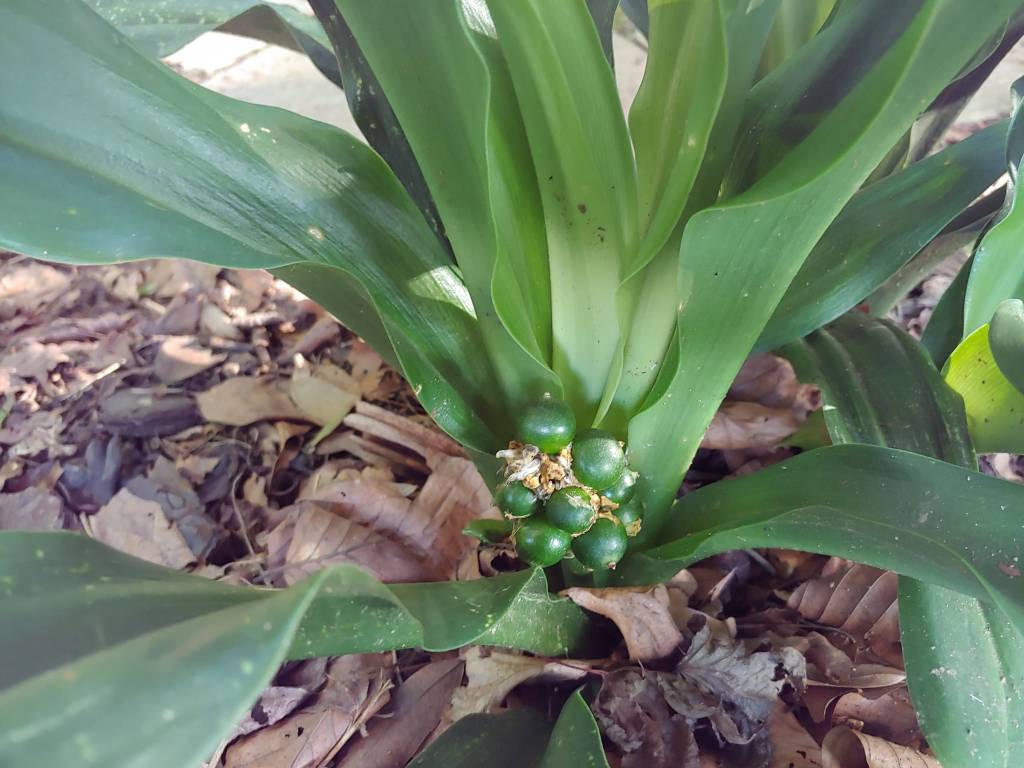
The berries of Sacred lilies (Rohdea japonica) will soon turn red, though they are barely noticed at the base of thick clumps. Rohdea is reputed as a slow clumper, but one thick clump has been divided into a dozen, with hardly a noticeable loss to the original clump.

Variegated hostas such as the common (but excellent) ‘Frances Williams’ are bright spots in the shaded garden. These grow well even in dry shade.
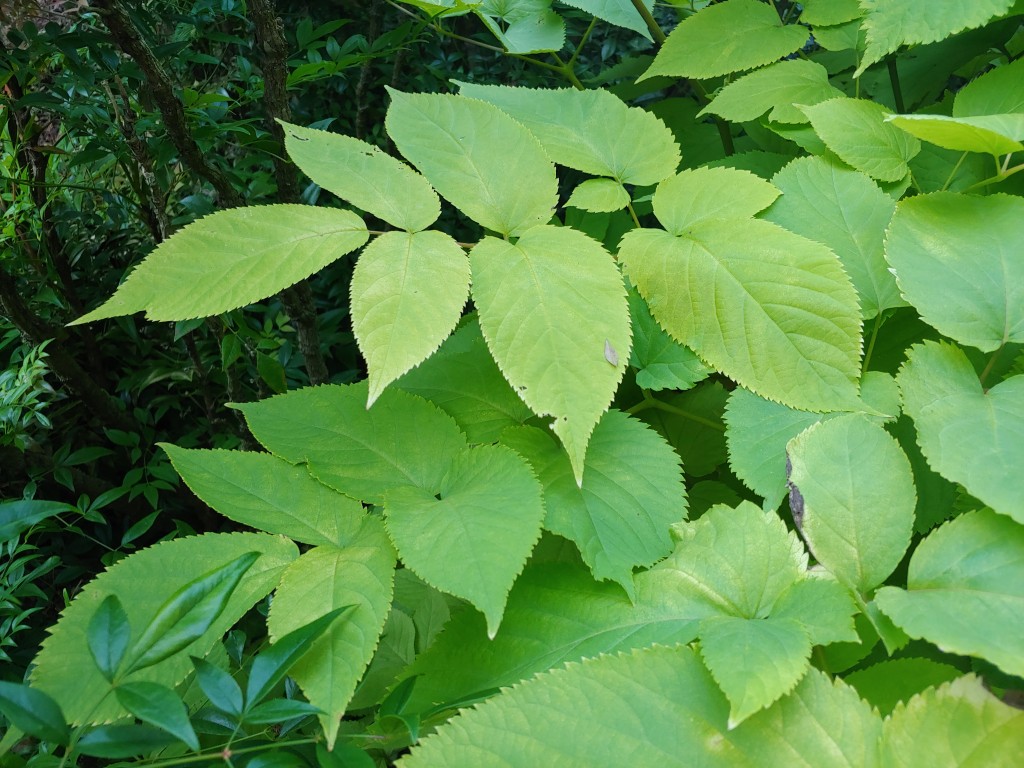
The shrub-like perennial ‘Sun King’ aralia requires a substantial space (3-4 feet square). It’s Sputnik satellite shaped blooms are not showy, but add to the summer long show of brightly colored foliage.
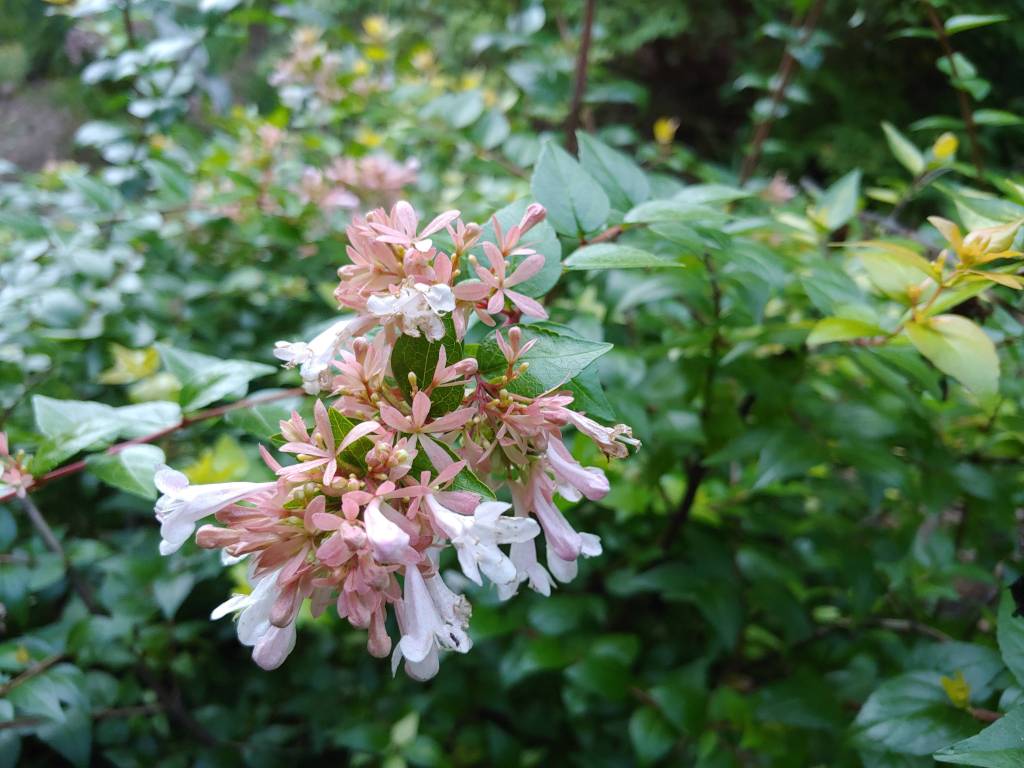
The brightly colored leaves of ‘Canyon Creek’ abelia fade in the summer sun, but its blooms are delightful. While other cultivars feature superior foliage, most lack the large flowers of ‘Canyon Creek’.
Thanks for the post about more color. Reading your blog and seeing your plant ideas is so much fun.
Have a tricky hydrangea question for you. I have a bed at the edge of a canopy of oaks and maples where oak leaf hydrangeas fo awesome but I cannot get endless summer or quickfires to bloom. Paniculatas maybe need more sun but I don’t get why the big leaf rebloomers would not do well where oakleafs thrive.
Love euphorbia and saw you mentioned it was an annual in your garden. I have tried them in sun, part shade, and shade to no avail. Different ones depending on the label and nursery also suggest different exposures. Any ideas?
Panicled hydrangea require sun to flower to their fullest, though a Quickfire that gets an hour or two flowers acceptably here. Mopheads prefer part sun, but there is an undefined break point where flowering diminishes or stops. Excessive green growth from fertilizing can also inhibit flowering, as well as pruning that stimulates growth but not flowering. So, the answer is that it’s very difficult to tell why Endless Summer is not flowering. Sometimes it’s best just to move it.
Bonfire is a hardy euphorbia. There are tropical and very cold hardy euphorbias, which I have many of with great success. I think Bonfire doesn’t like the heat, so it nearly defoliates by late summer.